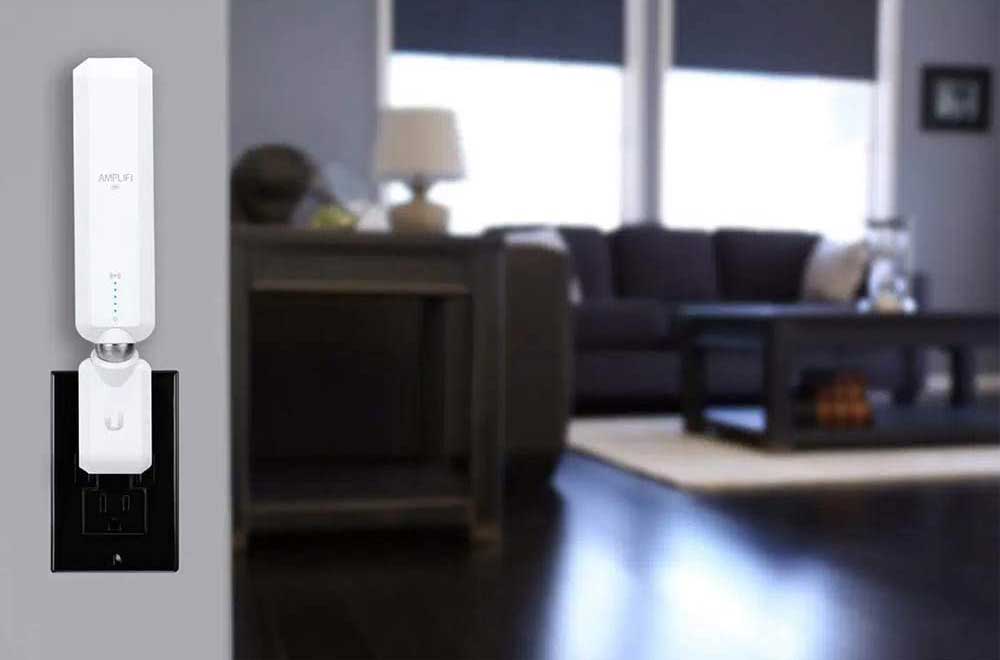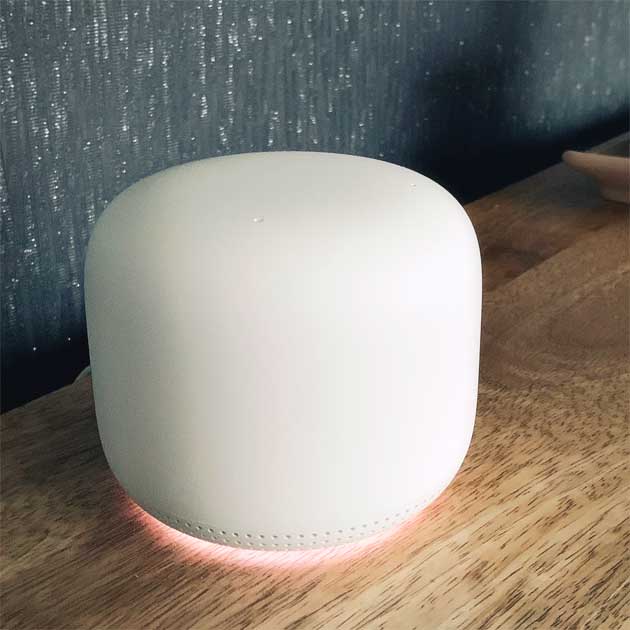What Is Spectrum TV Essentials?
Spectrum TV Essentials is a live TV streaming service that includes over 70 entertainment, lifestyle and children’s networks. But there’s a catch.
Large homes are not suited for traditional Wi-Fi routers. If you use, for example, the Wi-Fi router from your internet service provider, you may find that your connection is extremely spotty in certain areas of your home. Homes of a larger size need a stronger Wi-Fi network to achieve maximum coverage. This article covers the best Wi-Fi technology to achieve a strong, reliable internet connection in larger homes.
Mesh Wi-Fi is a great solution for homes that are not getting a fast and reliable internet connection throughout their entire area. They provide coverage through the use of wireless nodes that act like a spider web – they are all connected at once, keeping your home on one wireless network. If you want a more traditional Wi-Fi network that uses only one router, it may be wise to invest in a long-range Wi-Fi router, especially if your home is large.
You may have heard the term “mesh Wi-Fi” thrown around recently. Internet technology is constantly improving and becoming easier to use, and mesh technology is at the forefront. So, what is mesh Wi-Fi? How does it work? To summarize briefly, it creates a network that is larger and faster than traditional Wi-Fi connections through the use of multiple Wi-Fi nodes placed around a home.
Another way to get a strong Wi-Fi network in a large home is with a long-range Wi-Fi router. They are essentially a much stronger version of the router that your internet service provider may rent to you every month. These long-range routers are state-of-the-art and typically equipped with the latest and greatest Wi-Fi technology, boosting your Wi-Fi signal to a much wider coverage area.
Both types of Wi-Fi networks are adept at maximizing network coverage in bigger homes. Whichever you ultimately decide on is a matter of preference.
Mesh Wi-Fi uses a system of nodes placed around a home to power a fast and reliable Wi-Fi network throughout a large area. Mesh networks use a main router, or the main node, and a series of smaller nodes that are placed strategically around a home to carry wireless signals further. These nodes do not need to be connected with the main node. Instead, they “communicate” with one another wirelessly and essentially bounce the one Wi-Fi signal off one another, blanketing an entire home in Wi-Fi coverage in the process.

Mesh networks allow for a fast and reliable internet connection no matter how far away a room is from the main node. For example, an upstairs bedroom that may have had spotty service using traditional Wi-Fi would benefit greatly from a mesh Wi-Fi network. A node placed upstairs (or in a basement, kitchen, garage, wherever) means that those surroundings will have just as fast and strong a connection as your main room. It creates one wireless network with consistent strength no matter how far away you get.
A mesh Wi-Fi network differs from traditional Wi-Fi in a few ways. “Traditional” Wi-Fi refers to a network with one modem, one router and perhaps a Wi-Fi extender or two. Some networks combine a modem and router into one device called a gateway. If you are finding all these technology terms such as modems, routers and gateways confusing, consider learning about the differences between modems and routers.
Let’s dive into some key differences between mesh Wi-Fi and traditional Wi-Fi.
Mesh networks use only one wireless network throughout an entire home. This network strength remains relatively consistent throughout the home because of the distribution of nodes. Conversely, one singular traditional Wi-Fi network may not cover an entire home. Instead, signals are weakened due to obstructions such as walls, insulation, other electronics and more. This is why a far-away or upstairs room usually has a much weaker connection than the connection in your main room (where the router is located.)
Having one network that remains fast and reliable throughout a home without the need for Wi-Fi extenders is a huge part of what makes mesh Wi-Fi so convenient.
In theory, mesh Wi-Fi nodes and Wi-Fi extenders work much the same way. They take a wireless signal and extend it somewhere where the signal was either weak or completely absent before. However, a key difference between nodes and Wi-Fi extenders is that nodes use the same Wi-Fi network while Wi-Fi extenders each use a separate network from the home’s main network. This makes using Wi-Fi extenders a bit of a hassle.
Mesh Wi-Fi makes your entire home seamlessly connected, meaning you can take a device with you from room to room without worrying about a dropped signal or having to sign in to another Wi-Fi network. Wi-Fi extenders mean more accounts and passwords to keep track of and memorize. Mesh Wi-Fi means a blanket of consistent coverage throughout a home or business.
Wi-Fi extenders extend an existing Wi-Fi network’s coverage but create a new mini network when doing so. Mesh Wi-Fi nodes are all part of the same large network that acts similarly to a spider web. All the nodes are connected. This means that the nodes do not rely on wireless communication with the main node (or router) but rather on communication with each other. For example, if the main node is “one,” and a second node is “two,” and so on, node three does not have to rely on node one if node two is closer. Instead, three can communicate with two to receive its signals instead of having to communicate with node one which may be a far distance away.
This differs from traditional Wi-Fi where one router is responsible for carrying wireless signals to all the devices in your home, unless you get a Wi-Fi extender. If you do purchase a Wi-Fi extender, it needs to be strong enough to carry your Wi-Fi throughout the necessary space. It also uses its own network which means you will be switching networks every time you go from Wi-Fi extender coverage to your main router’s coverage.
Mesh Wi-Fi is certainly set to explode in popularity as high-speed internet becomes more widespread. Here are the benefits and drawbacks of the nodes-based networks.

Many companies sell mesh Wi-Fi systems that vary in price from under $200 to nearly $1000. Some standouts include:
Long-range Wi-Fi routers are just like typical Wi-Fi routers, except they are much stronger. This means they are able to send Wi-Fi signals to the farthest corners of most homes, even larger ones. Long-range Wi-Fi routers usually have the newest Wi-Fi technology built right in, meaning they can send out your high-speed internet connection with no issues. The newest and most advanced Wi-Fi protocol, Wi-Fi 6, is supported by many long-range routers.
Of course, the newer and stronger a technology is, the more expensive it usually is. Long-range Wi-Fi routers are no exception to this rule. However, if you want a traditional Wi-Fi network and your home is large, a long-range router is necessary to maintain a high-speed internet connection throughout your living space.
Long-range Wi-Fi routers render Wi-Fi extenders unnecessary, meaning your home Wi-Fi network should be reliable and fast no matter where in your home you are.
Long-range routers differentiate from traditional Wi-Fi routers in a few ways.
Wi-Fi routers of the past operated on one wireless band. This meant that only one frequency could be broadcast, and as more devices in a home became “smart,” this led to increased network traffic and slowdowns. As a result, most routers today operate on dual band frequencies.
However, some long-range Wi-Fi routers take it a step even further and operate three different bands. Long-range, tri-band routers are perfect for large homes with tons of internet traffic. These types of routers are built for large homes with many smart devices that use a ton of bandwidth. However, most households are just fine using dual band routers.
Usually, a traditional Wi-Fi router uses an omnidirectional antenna to send wireless signals equally in all directions. Nowadays, many long-range routers come equipped with giant antennas that can be manually moved and pointed to direct a signal to a specific area of your home. These long antennas are not just for show. The larger and stronger the antenna and router are, the stronger the wireless signal will be in whichever direction it is pointing.
This means that a long-range Wi-Fi router can be placed in a centralized location within a large home and its antennas can be pointed outwards to specific areas of the home instead of relying on one, equal, omnidirectional signal. The use of multiple antennas maximizes coverage within your home.
A long-range Wi-Fi router should be powerful enough so that Wi-Fi extenders are unnecessary. One central, powerful, long-range router that utilizes more than one frequency and proper use of antennas should provide a large home with a fast Wi-Fi network in all locations.
| Feature | Mesh Wi-Fi | Long-Range Traditional Wi-Fi |
|---|---|---|
| # of Routers | One central router and multiple nodes | One central router |
| Price | Start around $200 | Range between $80-$500+ |
| Coverage | 2,000-5,000 sq. ft | 2,000-5,000 sq. ft |
| Setup | Easy | Same as traditional Wi-Fi router |
Mesh Wi-Fi uses multiple nodes placed around a home to blanket the entire area in one fast network. Traditional Wi-Fi relies on Wi-Fi extenders to reach similar coverage.
Some of the best long-range Wi-Fi routers include models from brands including ASUS, Netgear, TP-Link and more.
Mesh Wi-Fi uses multiple nodes placed around a home to create one wireless internet network with consistent strength. Wi-Fi extenders serve to extend a home's Wi-Fi network but create new, smaller Wi-Fi networks in the process. This makes a mesh Wi-Fi system much smoother.